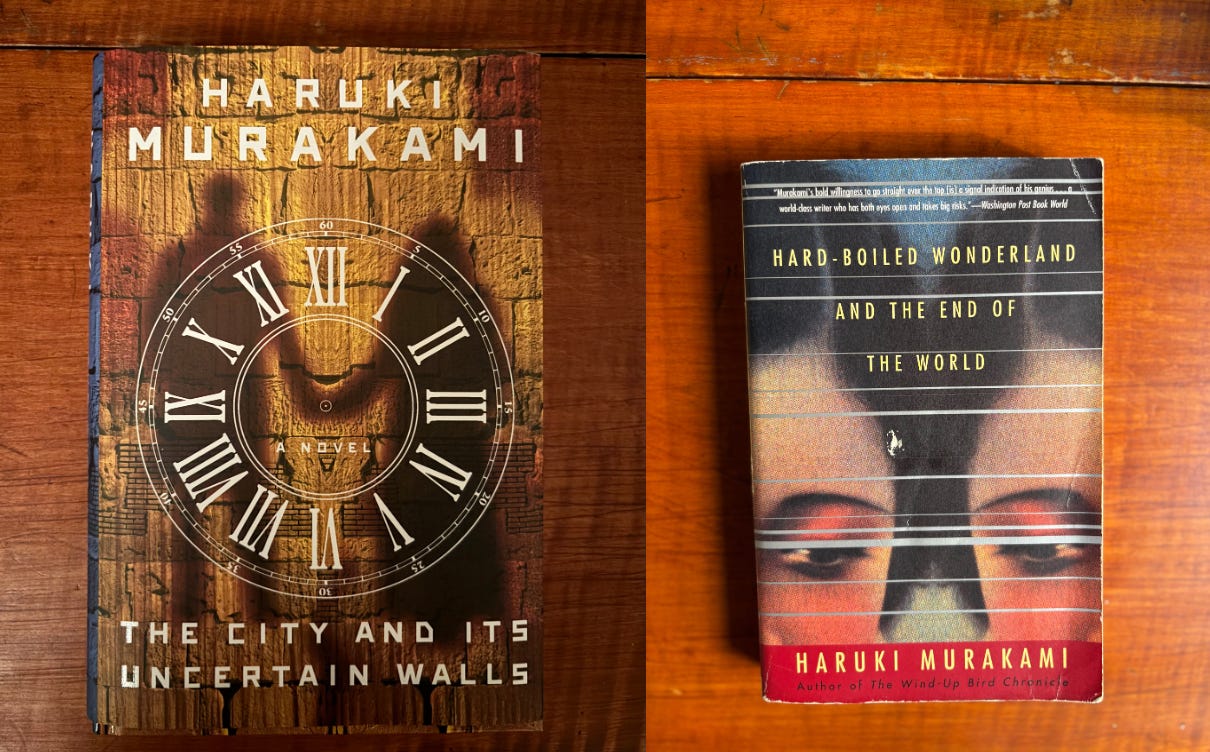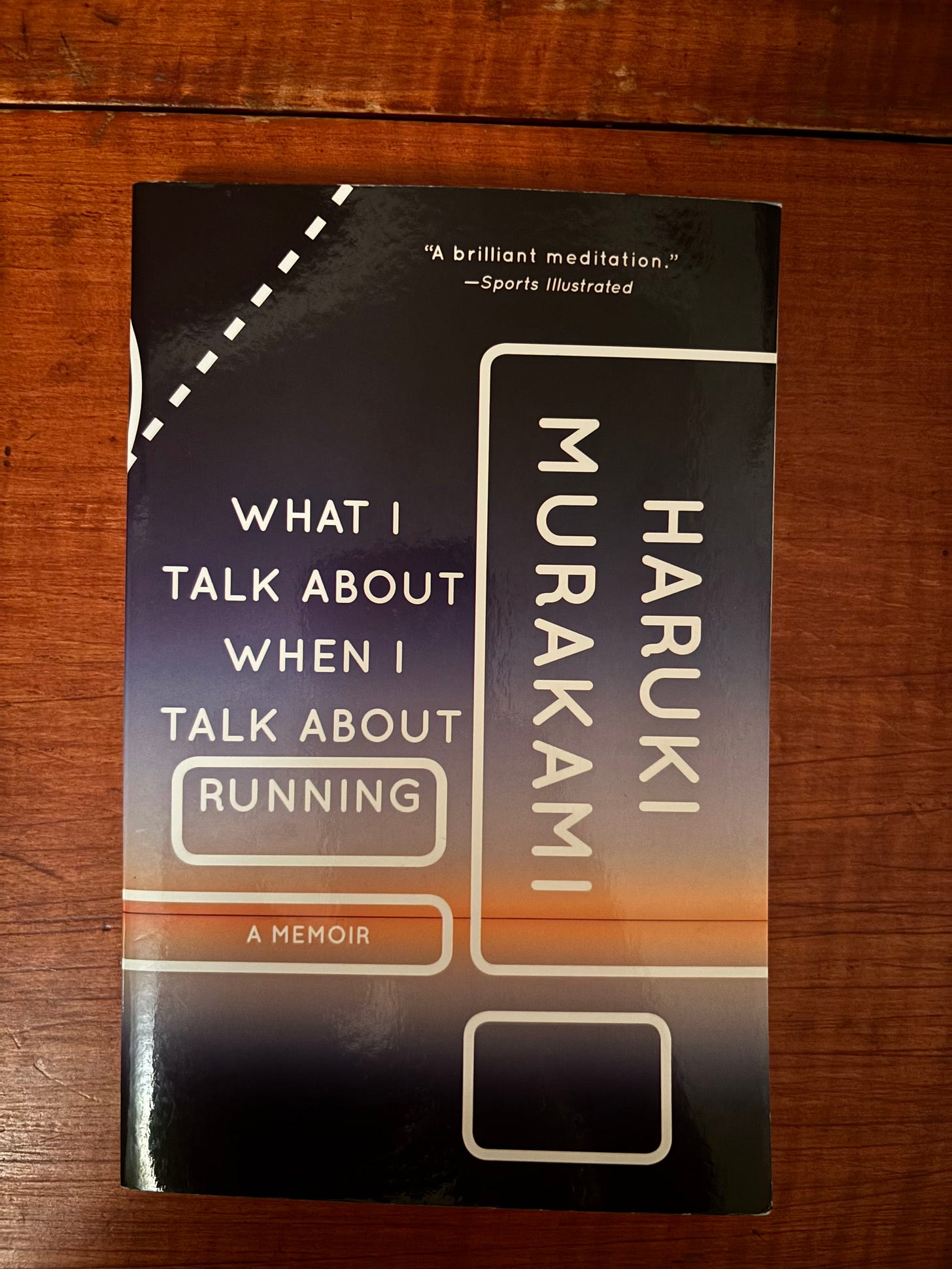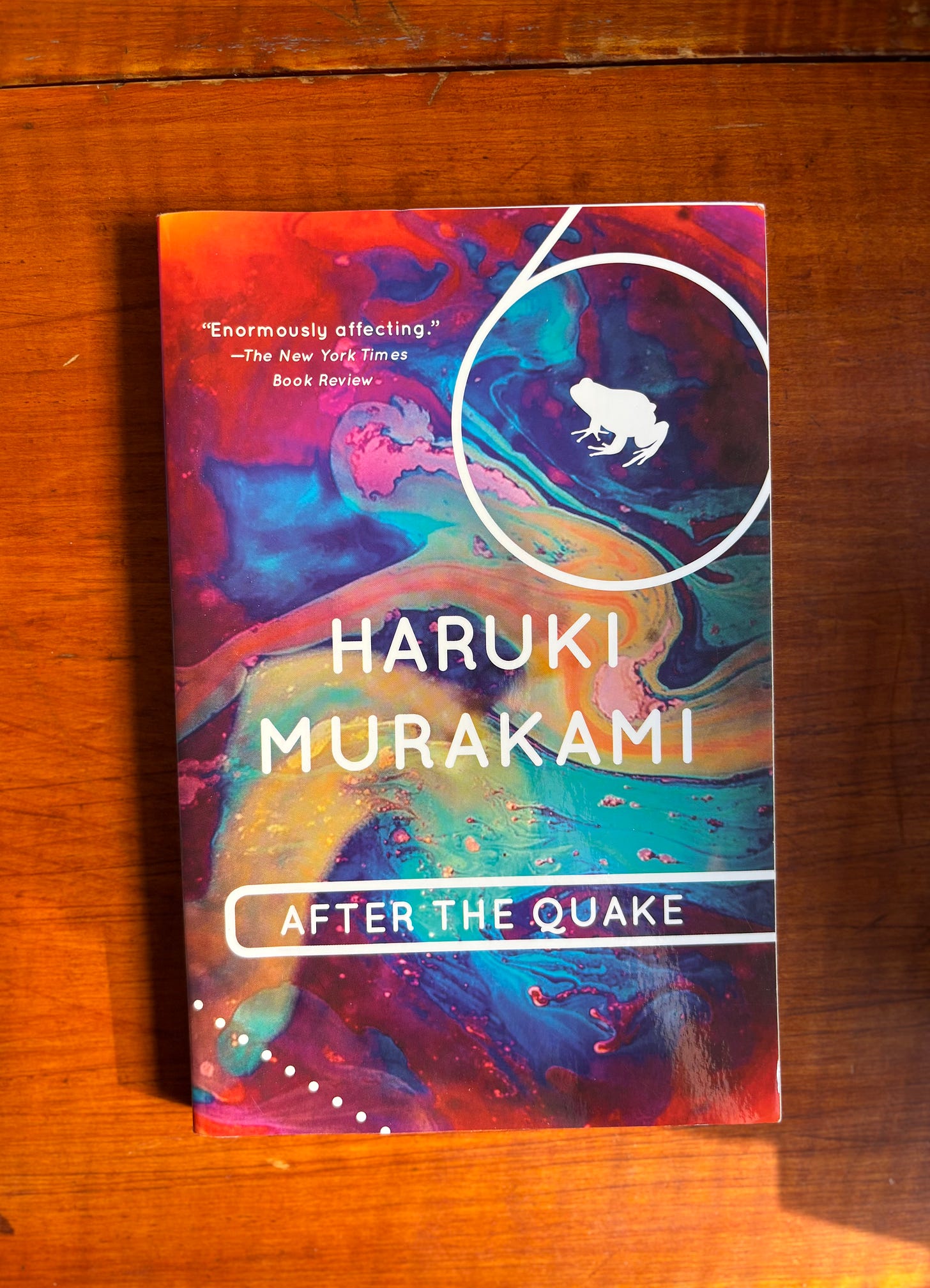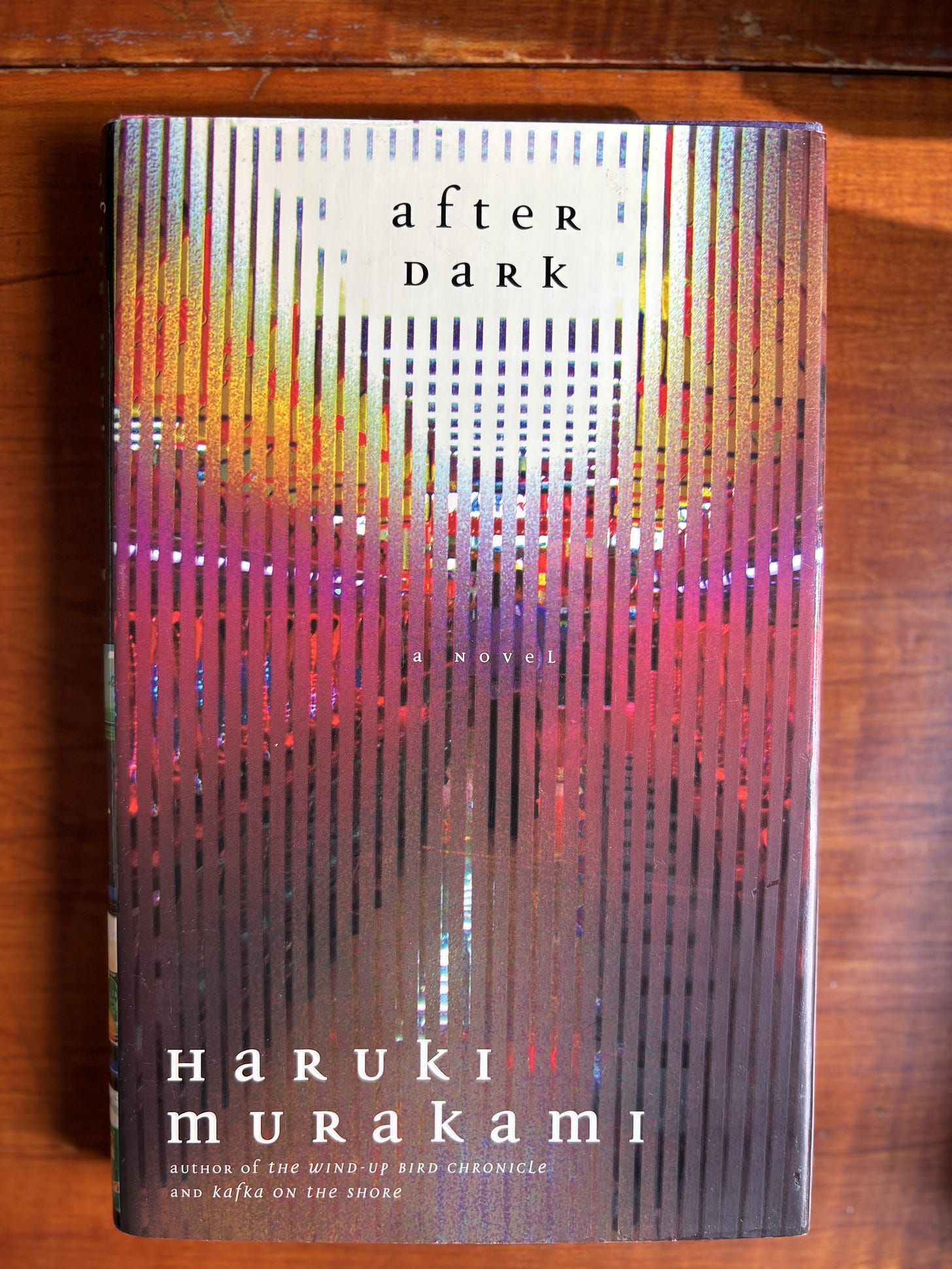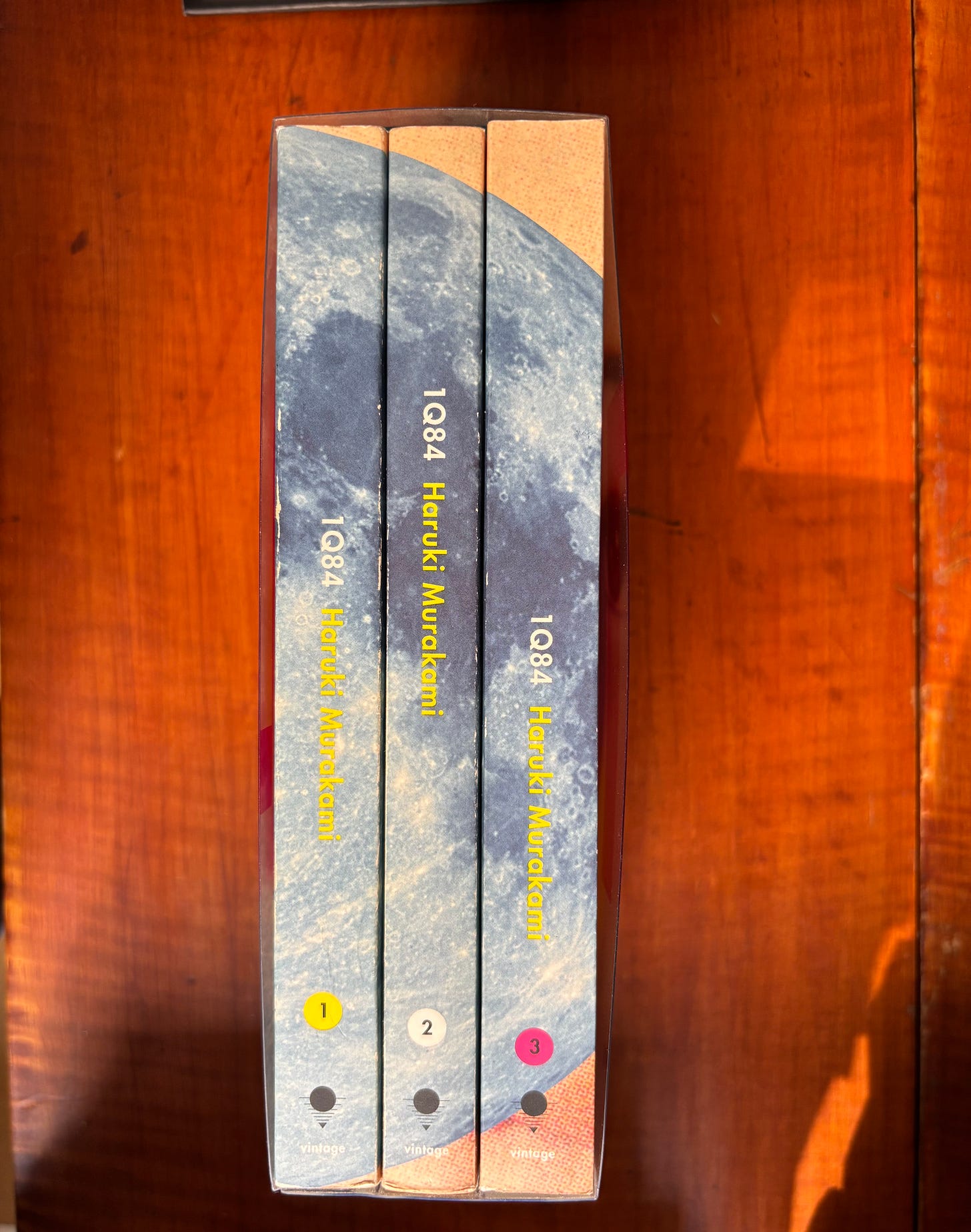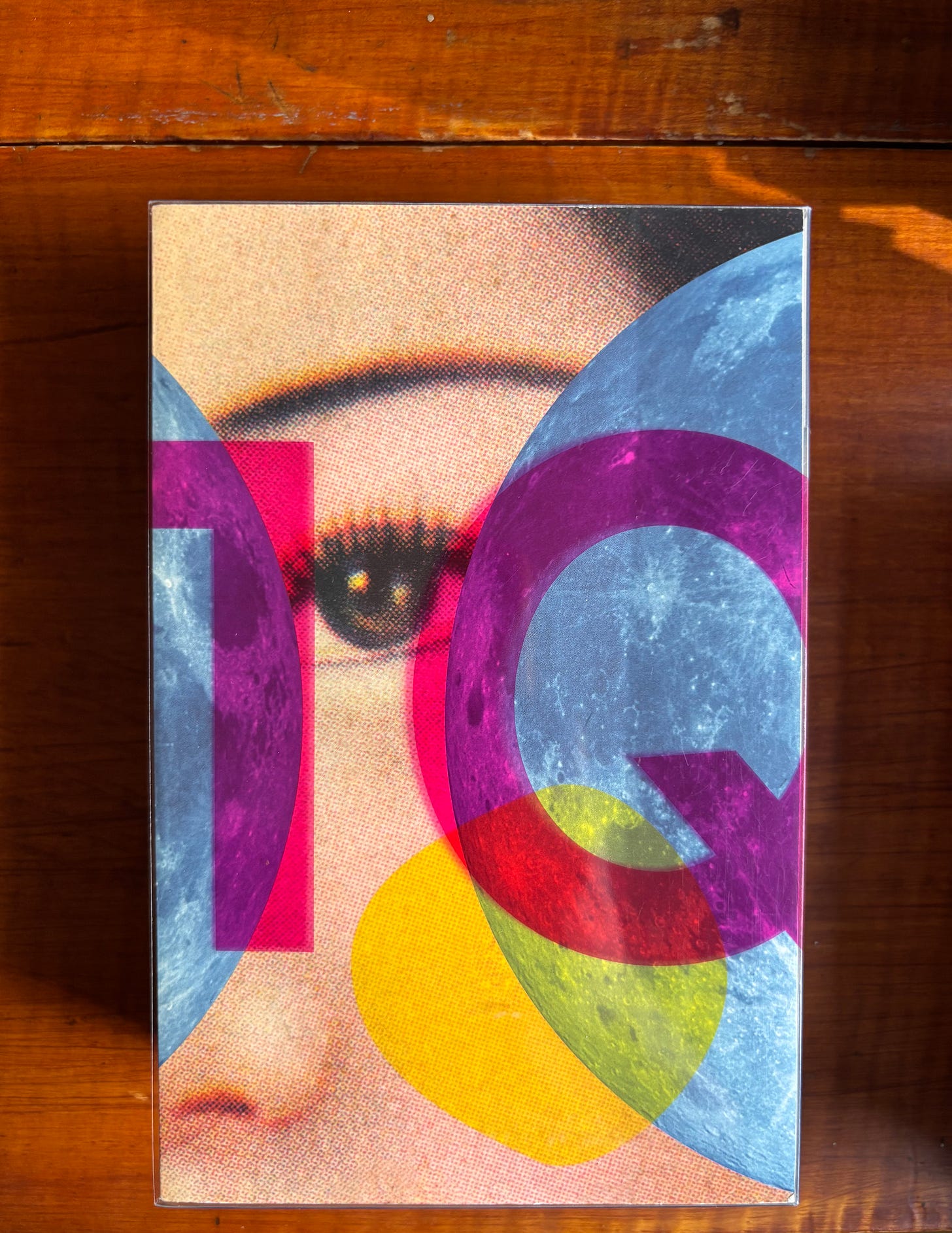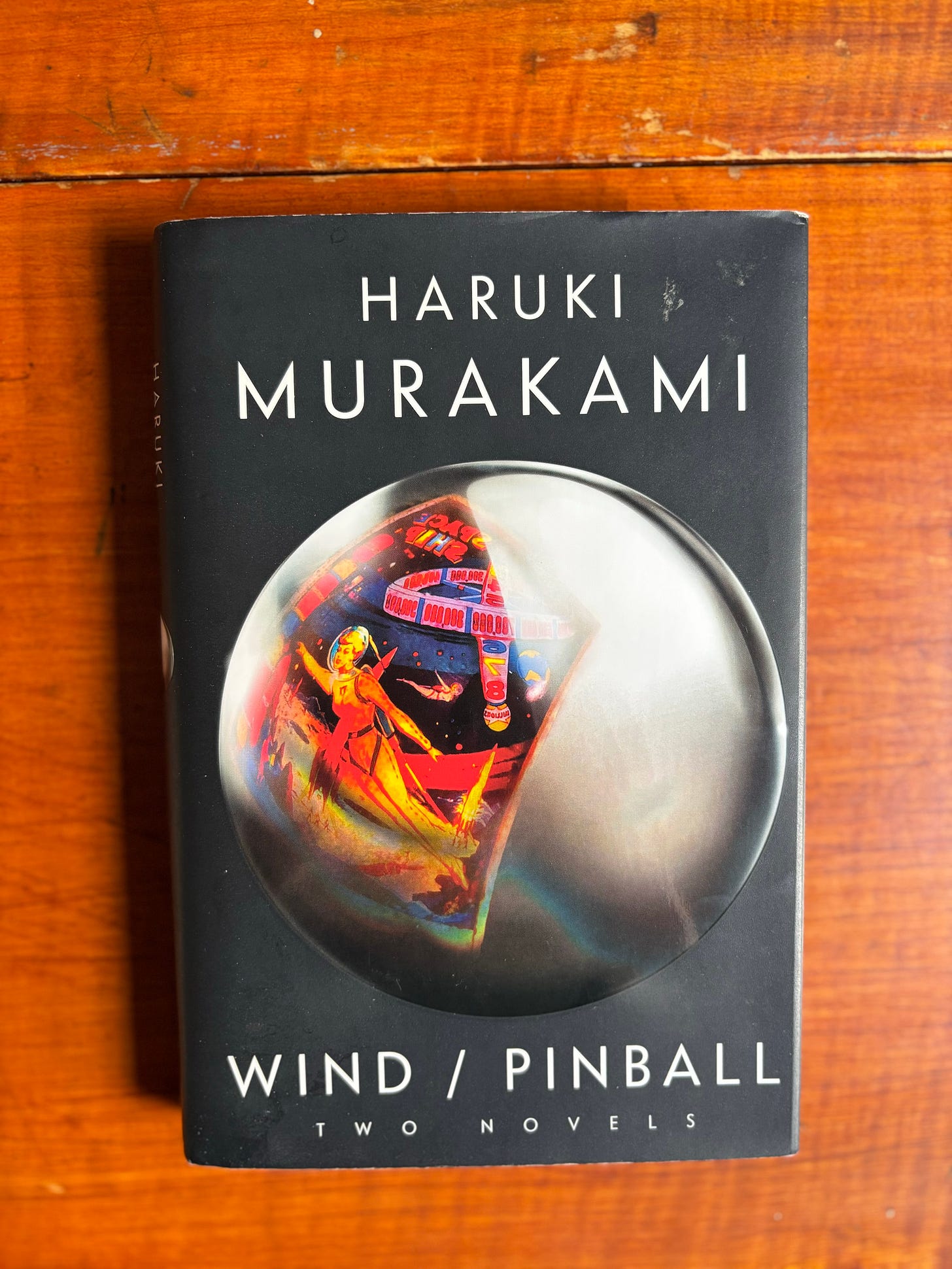Previously…
Murakami Master Shelf Introduction
Murakami Master Shelf - Part I #25-16
KERNELS OF MAGIC AND GRAINS OF SALT
The most fun part of an author’s oeuvre to talk about is the middle. There’s some delight in picking over the bottom stuff and lightly roasting your favorite author for their peccadilloes and missteps, but there’s not much to recommend. There’s a joy in celebrating an out-and-out masterpiece, but the conclusion is predictable every time (this is great, go check it out yourself). The middle is where everything is a bit messier. Its kernels of magic and grains of salt. The middle often tells you the whole story of a writer, and helps you locate what they do well and where they get hung up sometimes.
Both amazing and bad books inspire in their own ways—one gives people something to live up to, the other gives them the confidence to outdo. But the “middle” books challenge. There’s no surer sign as a reader of a really good, but not exceptional book than when it engenders a certain kind of depression. A disheartening quality. It’s one that I’ve felt often with a lot of David Foster Wallace’s stories and writings for example— his fiction is impressive in an obvious manner and smart in a perfect-score-on-the-SATs way that doesn’t feel learnable. “Oh, I’ll never be this intelligent in this specific way.” And while this is certainly a compliment in some respects, it’s also a sign of a flawed work: masterpieces don’t leave fingerprints, but the ones in the middle of a great artist’s portfolio do. The next eight Murakami books on our ranked list, #16-9, do just that—they tell us a whole lot about this singular writer.
THE MIDLIST
16 & 15. The City and its Uncertain Walls (2024) & Hard-Boiled Wonderland and the End of the World (1985)
These two novels exist in a related universe of Murakami’s invention, a kind of otherworld that is parallel to reality that the characters move between. “The city” —which feels more like a small town — is, per the second novel’s title, surrounded by high walls that make it hard to get in and out of. It’s an idyllic place that’s sort of creepy as a result—a formless setting where the people don’t really need for anything but shuffle around doing basic tasks. There’s some kind of beast (unicorns?) that the town’s people ritually slaughter.
Hard-Boiled is the weirder of the two novels and maybe the slightly better for it. A book that’s also delightfully a very 1985 novel—Wikipedia adequately describes the “real” half the narrative as “cyberpunk, science fiction.” Read it today and the novel is kind of a fascinating window into what possibilities writers imagined for computing and technology. Murakami, famous lover of vinyl records and knickknacks, isn’t massively optimistic about tech’s potential.
Hard-Boiled and The City and its Uncertain Walls are novels of two halves: a real and an unreal world. Both are accordingly hot and cold, my personal preference in this case being for the real over the unreal half. There’s a certain flatness to Murakami’s city at the end of the world, a sort of fantasy sheen and unambiguous metaphorical purpose that makes the fantasy halves of each novel kind of dull. The otherworld is banal and nightmarish, but more that former than the latter. Murakami’s failure to create an interesting alternate reality reveals the stark difference between the fantastical and magical realist. A writer that can do one can’t necessarily do the other. Murakami is at his best when he’s tip-toeing on the line between real and unreal, drawing imaginative dark lines in the greyness of the world we know. But crossing over fully to fantasy in Hard Boiled and Uncertain Walls the storytelling can become, ironically, two dimensional.
14. The Elephant Vanishes (1993)
The Elephant Vanishes has some of the most important Murakami stories ever written and also some of his more forgettable ones. It includes both “The Wind-up Bird and Tuesday's Women” and “Barn Burning.” “The Wind Up Bird and Tuesday's Women” is the first chapter and basis for The Wind-Up Bird Chronicle, which — spoiler — is on the final list of best Murakami books. “Barn Burning”, meanwhile, is the basis for one of the few Murakami film adaptations, the widely acclaimed Burning (perhaps they thought the original title gave a little too much away).
The Elephant Vanishes gives you a little bit of Murakami’s mid-career strangeness in the 80s and early 90s (same as Hard-Boiled). Check out “TV People” published in The New Yorker for a good example of this sort of wackiness. The title references the people who install TVs (not the ones on them) who are “twenty or thirty per cent” smaller than normal people, and then the narrator’s wife goes missing. Typical of a Murakami story, you’re left to ask: are these two things related? As usual the answer is unclear. Like much of The Elephant Vanishes, it is textbook Murakami making the uncanny feel natural, but to mixed results.
Often Murakami’s imaginings are humorous, much of the times they give some mundane human problem a weight of seriousness as they do in “The Wind-up Bird and Tuesday's Women” and “Barn Burning.” Sometimes with stories like “TV People” or “The Dancing Dwarf” or “The Little Green Monster”, these imaginations end up as silly thought experiments.
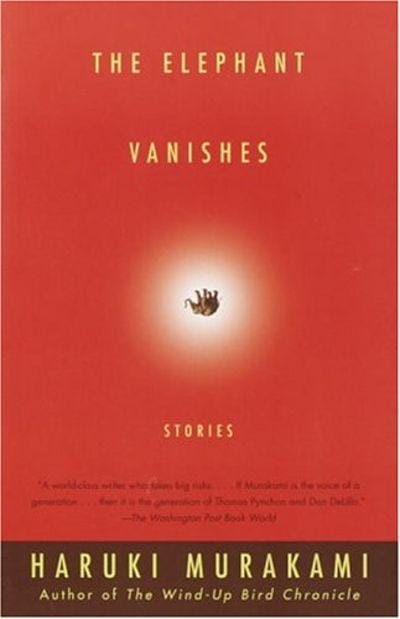
13. What I Talk About When I Talk About Running (2008)
A much better book on writing than Murakami’s actual book on writing covered in Part I of this list. Among his best works of nonfiction as well, it’s still not perfect.
Running as a literary device would probably make my top-10 for literary clichés (a newsletter for another date). Murakami is not quite using running the cliché way characters in novels do, but nonetheless the metaphor between running and writing is quite obvious. To trot out another cliché, both activities are about putting one foot in front of the other. Thankfully, Murakami himself might have been aware and this memoir of sorts is a slim 175 pages expounding on this metaphor.
More so than Novelist as a Vocation, What I Talk About When I Talk About Running gives psychological insight into how Murakami has written such a lengthy body of worthy literary work that it takes three parts to properly cover and rank. While the messages of “wake up every day and put something into practice” or “finishing something is a factor of mind over matter” are quite simple, Murakami is very good at making the simple feel special. He gets down to it: for all the talk of craft and mechanics in literature, running and writing are about doing repetitive motions to get better and the will to keep going until you reach some sort of arbitrary finish line or goal.
There’s a particularly memorable moment where Murakami describes running a marathon and having his legs basically quit on him. What he does is pump his arms as hard as he can to compensate, which causes all other kinds of painful problems, but does help him eventually finish the race. And that’s a less cliché way of extending the same metaphor out to writers: if your legs stop working, then use your arms.
12. After the Quake (2002)
Super-frog.
As tempting as it is to leave that as a joke, After the Quake is just a rock solid (sorry) slim short story collection. It’s still within touching distance of Murakami’s weird period, but in a fun a way. And, yes, there’s a story called “super-frog saves Tokyo.”
11. After Dark (2004)
The pinnacle and quintessential middling Murakami novel, smack dab (almost) in our rankings. It is slim and solid, much like After the Quake, and it also has some of the techno-oddities of Hard-Boiled. The concept of the novel is delightful as a reader – it takes place over a single night. It has one of Murakami’s few but best female protagonists, a 19-year-old band member (the band is practicing, that’s why they’re up late). It’s not as good as the Scorsese film After Hours that may have been an inspiration, but it’s got that same 24-hour-diner, late night sheen that if you’re a sucker for you’ll really enjoy this one. If not, it’s only like 200-pages so it won’t hurt you too bad either way.
10. 1Q84 (2011)
We’ve arrived at what I would consider the highest highs and the lowest lows of the Murakami experience. Considering this book’s relatively high review rating among general readers, my opinion may be controversial. The two lovers fighting against fate to be together at the heart of this 900-page epic (originally published in three separate volumes in Japan) is incredibly dull. When the love story narrative is on the front burner, it’s among Murakami’s worst when put against the many other iterations of this same kind of heliocentric one-man-one-woman love stories he’s written.
Then why does this novel rank #10? Other than a clear compulsion to be a completist, why slog through large stretches 900-page novel? 1Q84 has, simply put, the best Murakami opening of any of his novels. One of his superpowers as a writer is to know where to start. Often the entirety of a Murakami novel is contained in the opening chapter. He has a knack for not wasting a reader’s time and opening on the most important moment or place or event such that the rest of the story feels like it naturally flows from this one consequential piece of the puzzle.
In 1Q84 the novel starts in a traffic jam, the driver is playing classical music. The passenger, a woman dressed for business in tall heels is late and has to be somewhere desperately. Eventually, with unwavering confidence, she gets out of the car and walks along the parking lot of an elevated highway without paying close attention to all of her onlookers. What happens next, I won’t spoil, but suffice to say this is one of the most delicately orchestrated and delightfully shocking opening chapters of a novel I have ever read. It’s Murakami at his best with lots of his signatures involved (classical music, of course), taking a mundane setting (a traffic jam) and a mundane problem (late for a meeting) and turning them into the sublime. Reading this opening chapter for the first time felt like Murakami was cracking my brain open to new possibilities. Even though the story wanes significantly afterward, this stellar opening keeps you chasing that initial high long into the novel.
But you can’t just stop after chapter 1 because the opening of part 3 (or book 3, as it was in Japan), is, maddingly, another one of Murakami’s best pieces of work and lays bare one of his most unique traits as a novelist. A classic novelist usually cements themselves because of their main character work — Anna Karenina, Elizabeth Bennet, Ebenezer Scrooge, etc.— but Murakami is not really a main character kind of writer. Most of his narrators are blank slates (with a few notable exceptions). A typical description of a Murakami protagonist will go something like: “he was a normal guy, not too good looking— he got average grades in school and now worked a typical job.” The love interests also can often be kind of hollow objects of desire, as previously discussed. But Murakami shines in supporting characters. The bartenders in his noir inspired stories, the wacky roommates at university, the bizzarro “sheep man”, the disgruntled bosses and odd ducks we meet throughout our journeys. It’s, frankly, one of Murakami’s best tricks, using a blank slate, a “normal” person as a protagonist, so that you buy into every oddball and surreal experience they come across.
Ushikawa in 1Q84 is the Philip Seymour Hoffman of Murakami supporting characters. Described as completely odious and ugly, Ushikawa is a lonely private investigator hired to keep a watchful eye on one of the main characters. Never has such an obviously unlikable character been so fun to follow. After smooth, monotonous parts of 1Q84, this character offers a welcome sharpness. There’s a certain kind of absurdity and nobility to Ushikawa. He seems extreme—you probably don’t have a Ushikawa in your life to compare him to. And yet, in Murakami’s hand he also feels like a real type of person, one who has taken the precise wrong steps to end up with their singular and strange position in the world. Ushikawa made many hundreds of so-so pages suddenly feel worth it, and that’s a powerful character.
9. Wind/Pinball (1979, 1987 in English)
Technically two short novels, these are Murakami’s first two works—“Hear the Wind Sing” and “Pinball, 1973”. Like his opening chapters, they contain the seeds of everything that was to follow in his career. Murakami is burrower of a novelist, excavating the same essential themes over and over again. It’s not a surprise, then, that he arrived on the scene with the same writing style he would still have 45 years later— smooth, matter of fact, and able to take a normal narrator into abnormal situations.
This is not Murakami at the height of his powers or in his final form. There’s also a bit of first-time writer syndrome that even a master can’t shake. The concerns and plotting of the story are familiar, the protagonist is a writer, the dramatic moment is a common one that young writers choose. And yet Wind/Pinball is enormous fun to read. With a bit more Raymond Chandler influence than some of his later works, Wind/Pinball contains another iconic supporting character, “the Rat” (need I describe more?). It announces a new kind of literary noir and dreamlike trance that seemed like a lot of things you’d seen before but turned out to be completely revolutionary, a precise calibration that would inspire many authors and gain Murakami many readers in the years to come.
NEXT TIME
We get down to it. If you’re dedicated enough to read every Murakami book, then you can figure out the final eight books on this list. From maximalist masterpieces to tightly-focused, minimalist ones. From unexpected nonfiction to stories. Murakami’s best works make the strong case why he is one of the greatest writers of his generation and maybe should get that Nobel prize he doesn’t seem particularly interested in. This master of master list also comes with one of the highest compliments you can pay a writer: no one else could have written these books but him.


